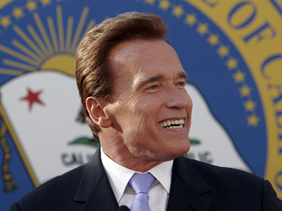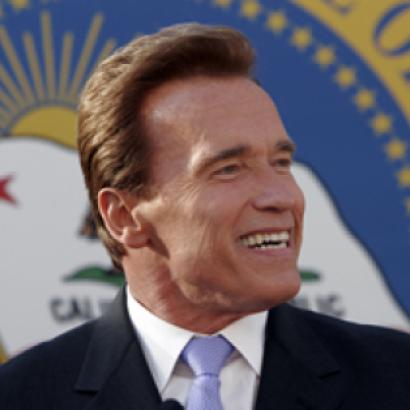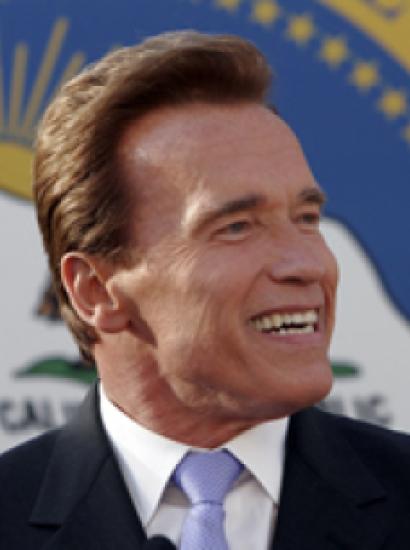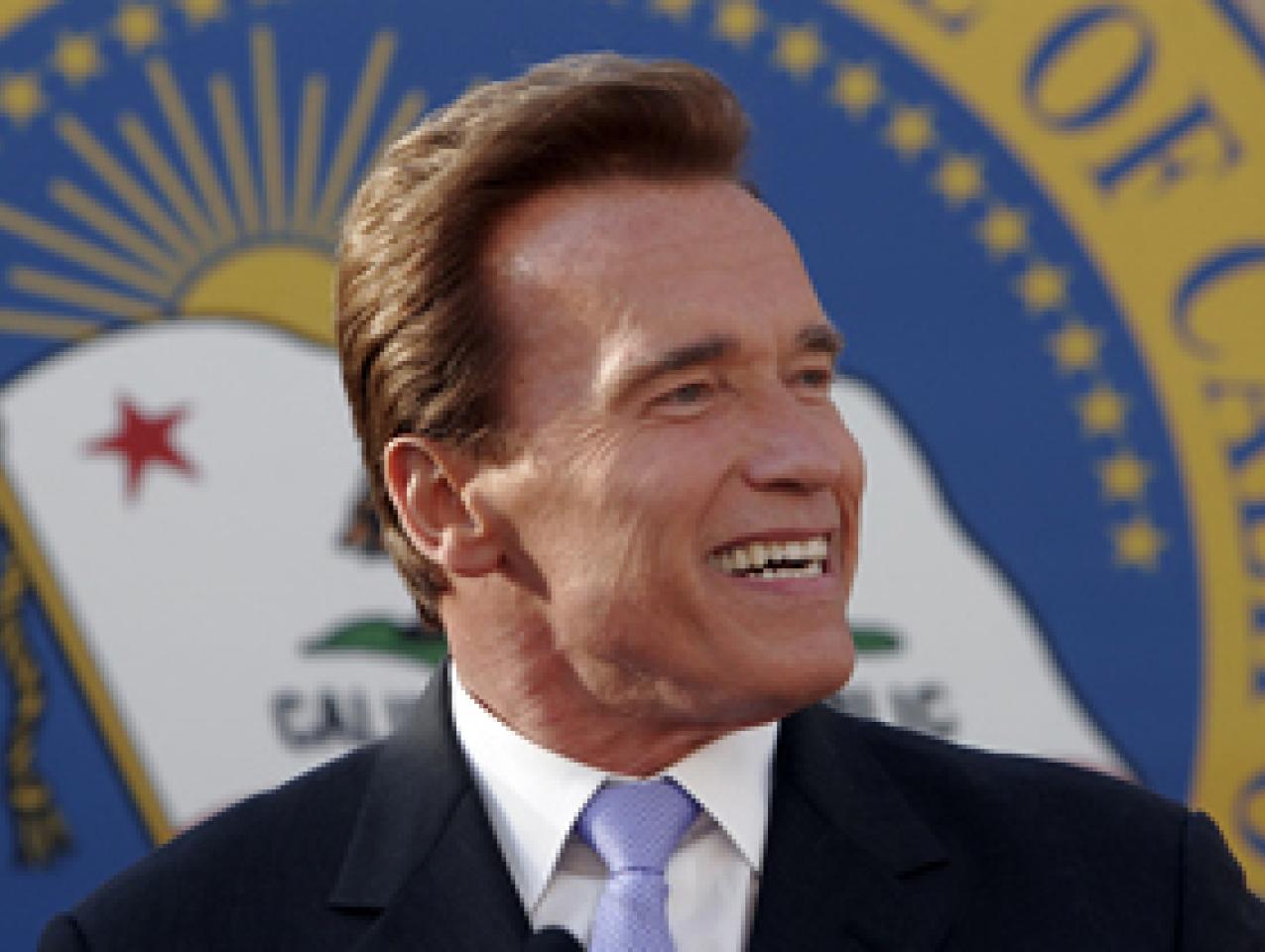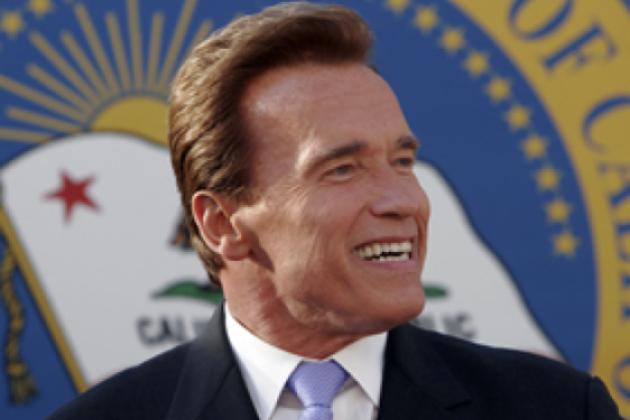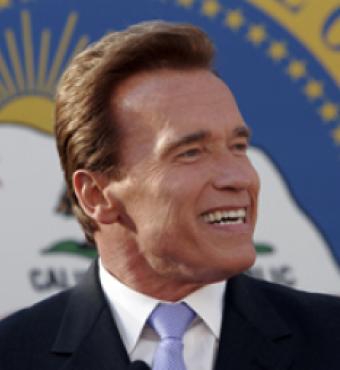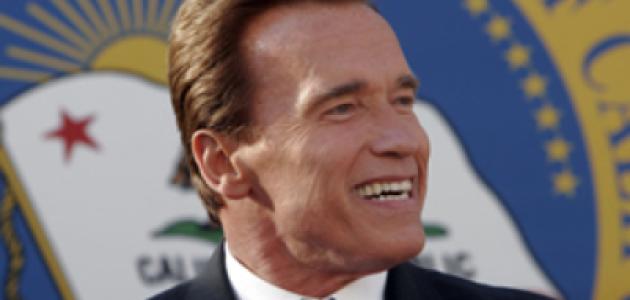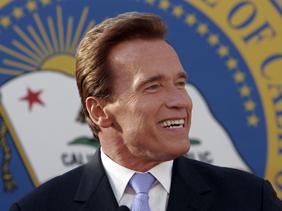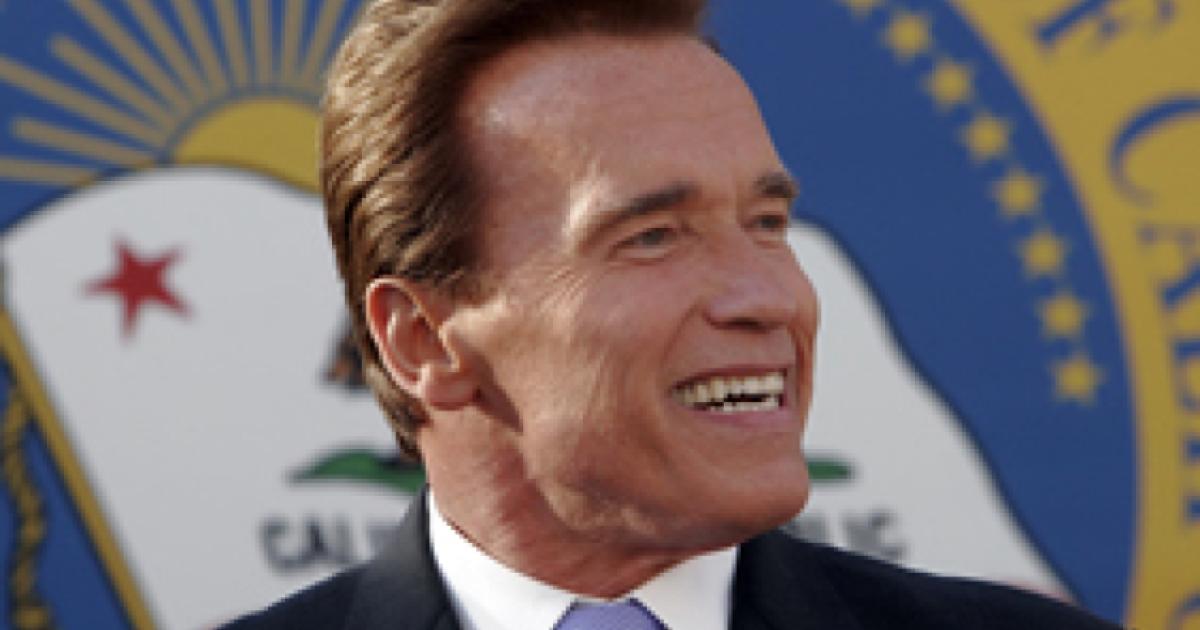- Politics, Institutions, and Public Opinion
- Campaigns & Elections
- State & Local
- California
In 2003, California voters faced a decision: whether to recall the incumbent governor, Gray Davis and replace him with someone from a list of 135 would-be chief executives, including one of the most famous individuals on the planet at the time, Arnold Schwarzenegger.
Every twist and turn in the 2003 recall election received saturation media coverage in California and throughout the country. Schwarzenegger campaign events were sometimes jaw-dropping, like the time Dee Snider (the front man for the rock band Twisted Sister) belted out “We’re Not Gonna Take It” on the steps of the California state capitol or when a massive weight dropped from great heights onto a junked Buick to dramatize how the candidate planned to “crush the car tax” if elected governor. Some reporters deemed it a “political circus.”
Behind the scenes, however, it was all business.
I ran Schwarzenegger’s 2003 policy shop. That effort later became known in some circles as “Schwarzenegger University,” which is a misnomer. About 150 people volunteered their time and expertise, but they didn’t think of themselves as faculty members trying to educate a student body of one. They were more like teammates, working together to help a state that was struggling.
One of the first people Schwarzenegger tapped for help was the late former secretary of state and Hoover distinguished fellow George Shultz, who had chaired a brain trust of economists that provided advice to former governor Pete Wilson throughout his administration (during the 1990s, I served as Wilson’s cabinet secretary and deputy chief of staff). Shultz brought to Schwarzenegger’s table some of the best minds then residing at the Hoover Institution, including Michael Boskin, John Cogan, John Taylor, and the late Martin Anderson.
Shortly after Schwarzenegger declared his candidacy in early August 2003, Cogan and former California Finance Department director Russ Gould arrived at the star’s Pacific Palisades home. Over lunch by the pool, they walked Schwarzenegger through the dire fiscal situation facing California. The sitting governor had exhausted the $15 billion budget surplus he had inherited from Wilson—and borrowed billions more on top of that. Out of that weekend’s conversation grew a plan to retire this wall of debt through a voter-approved refinance bond—Schwarzenegger called it a “recovery bond”—and a renewed commitment to fiscal discipline. (Those concepts would materialize on California’s March 2004 ballot as Proposition 57 and Proposition 58.)
Schwarzenegger then held two policy summits: one on the economy and the state budget, cochaired by Shultz and the legendary investor Warren Buffett, and another on the state’s education crisis, cochaired by former Los Angeles mayor Richard Riordan and Arizona’s former superintendent for public instruction Lisa Graham Keegan. Schwarzenegger’s campaign released detailed policy statements on the economy, political reform, energy, workers’ compensation insurance (then in crisis), the state budget, tribal gaming, education, the environment, and public safety. On top of that, we answered a mountain of questionnaires from newspapers and other organizations.
This work clarified the case for recalling the sitting governor at the time and defined for voters, in concrete terms, how a Schwarzenegger governorship would make a difference in their lives.
In retrospect, “Schwarzenegger University” served two important purposes:
- First, the policy apparatus helped identify people who could serve in Schwarzenegger’s administration. My top deputy, Victoria Bradshaw, became his labor secretary. A key adviser on conservation, Michael Chrisman, became his resources secretary. Terry Taminen, who staffed the campaign’s environmental policy committee, became head of the California Environmental Protection Agency.
- Second, since voters were evaluating Schwarzenegger’s capacity for the governor’s job, the policy effort helped prove he was up to the task.
One of Schwarzenegger’s final campaign events was a forum at the Memorial Auditorium in Sacramento in which he explained what he planned to do as soon as voters placed the governorship in his hands. Using a digital graphics presentation, he walked through the executive orders he planned to issue and the principles by which he would develop his first state budget. At the end of that presentation, everyone in the room—including the traveling press corps—understood that Schwarzenegger was a good fit for the job of California governor.
Days later, California voters agreed.
Governor Newsom signed a state law effectively moving this year’s recall election from mid-November to September 14, which makes this in-depth policy work more challenging for the candidates seeking to replace him. Nonetheless, they have more time than we did, as the time from Schwarzenegger’s entry into the recall election to his victory was all of two months.
As I watched a recent debate among some of the leading candidates to replace Newsom, I was struck by the lack of specificity to the rather obvious question: What would you do differently to address the state’s ongoing battle with COVID-19? Candidates seemed to revert to abstract concepts. Talk of “mandates” and “executive authority” doesn’t resonate with average voters. Here and there, we saw glimpses of plans to address the state’s homelessness crisis, build more houses, and control crime. But the candidates mostly seemed to be regurgitating their staff-written talking points rather than laying out an agenda in which they were personally invested.
Perhaps the candidates skipped some of this hard work because they believed the early polls showing Newsom was a shoo-in to beat this recall, and thus there was no reason to go to all the trouble of creating a detailed policy agenda.
That may turn out to have been shortsighted and irresponsible.
However unlikely it may seem on a given week, Gavin Newsom might be the second governor in California history to be recalled.
And the newly elected forty-first governor of California may find himself repeating a line from a 1970s film about another improbable victory in a California election.
That line: “What do we do now?”
Joseph Rodota was director of policy for the 2003 recall campaign of Arnold Schwarzenegger as well as cabinet secretary and deputy chief of staff for former California governor Pete Wilson.







